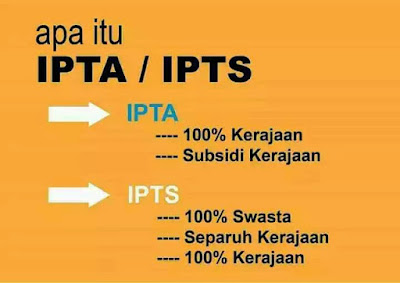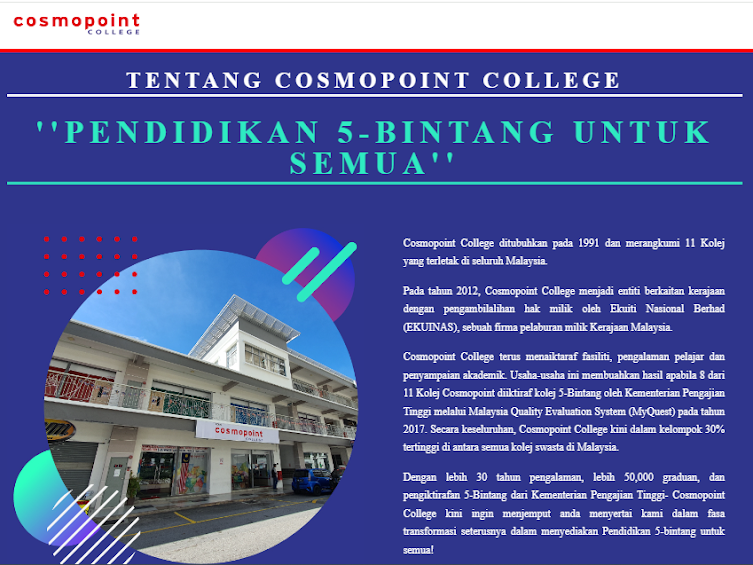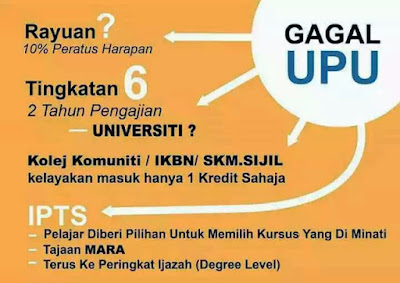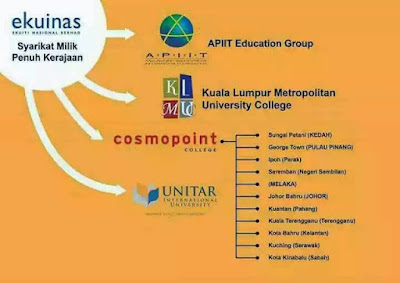Demystifying IPTA and IPTS: Understanding the Difference and Their Role in Education
In the ever-evolving landscape of education, it's important to understand the different institutions that play a vital role in shaping students' futures. Two such institutions in Malaysia are IPTA (Institut Pengajian Tinggi Awam) and IPTS (Institut Pengajian Tinggi Swasta). But what sets these two apart and how do they contribute to the overall education system?
In this article, we will demystify IPTA and IPTS, shedding light on their differences and exploring their respective roles in the education sector. Whether you are a student, a parent, or an educator, gaining a clear understanding of these institutions is essential for making informed decisions regarding higher education.
We will delve into the distinct characteristics of IPTA and IPTS, examining factors such as governance, funding, and admission processes. By the end of this article, you will be equipped with the knowledge to distinguish between the two and comprehend their significance in the Malaysian educational framework.
So, let's embark on this educational journey together as we unravel the complexities surrounding IPTA and IPTS, forging a path toward clarity and informed decision-making in the realm of higher education.
Understanding the difference between IPTA and IPTS
IPTA and IPTS are two distinct types of higher education institutions in Malaysia. IPTA, also known as public universities, are funded and governed by the government. They offer a wide range of undergraduate and postgraduate programs across various disciplines. On the other hand, IPTS, or private higher education institutions, are privately funded and governed. They operate independently and offer programs that are often more specialized and targeted toward specific industries.
One of the main differences between IPTA and IPTS lies in their governance. IPTA institutions are governed by the Ministry of Higher Education, ensuring that they adhere to specific regulations and standards set by the government. IPTS institutions, on the other hand, have more flexibility in their governance structure as they are not directly regulated by the government.
The role of IPTA in education
IPTA institutions play a crucial role in the Malaysian education system. They are responsible for providing quality higher education to a large number of students across the country. IPTA institutions offer a wide range of programs, from medicine and engineering to arts and humanities. They are known for their rigorous academic standards and often have well-established research facilities.
One of the key advantages of studying at IPTA is the affordability factor. As public universities, IPTA institutions receive significant government funding, allowing them to offer education at a lower cost compared to private institutions. Additionally, IPTA institutions are often recognized internationally, which can enhance the employability of their graduates both locally and abroad.
However, there are some drawbacks to studying at IPTA as well. Due to the high demand and limited spots available, admission to popular courses can be highly competitive. Additionally, the large student population at IPTA institutions can sometimes lead to overcrowded classrooms and limited access to resources.
The role of IPTS in education
IPTS institutions also play a significant role in the Malaysian education system. They provide alternative options for students who may not have been admitted to IPTA institutions or are looking for more specialized programs. IPTS institutions often offer programs that are tailored to specific industries and have close ties to the business community, providing students with practical skills and industry exposure.
One of the advantages of studying at IPTS is the flexibility it offers. Private institutions often have more flexible admission processes and academic structures, allowing students to customize their learning experience. IPTS institutions also tend to have smaller class sizes, which can lead to more personalized attention from professors and a more interactive learning environment.
However, the cost of education at IPTS institutions is generally higher compared to IPTA institutions. Private institutions rely on tuition fees as their main source of funding, which can make education more expensive for students. Additionally, the quality of education at IPTS institutions can vary, so it's important for students to research and choose reputable institutions.
Pros and cons of studying at IPTA
Studying at IPTA institutions has its advantages and disadvantages. One of the main pros is the affordability factor. As mentioned earlier, IPTA institutions receive government funding, which allows them to offer education at a lower cost compared to private institutions. This makes IPTA institutions more accessible to a wider range of students, regardless of their financial background.
Another advantage of studying at IPTA is the prestige and recognition associated with these institutions. IPTA institutions are often highly ranked both nationally and internationally, which can enhance the reputation of their graduates. This can open up more opportunities for employment and further education.
However, there are some cons to consider as well. Admission to popular courses at IPTA institutions can be highly competitive, and not all students may be able to secure a spot in their desired program. Additionally, the large student population at IPTA institutions can sometimes lead to overcrowded classrooms and limited access to resources.
How to choose between IPTA and IPTS
Choosing between IPTA and IPTS can be a challenging decision for students. It's important to consider factors such as cost, program offerings, admission processes, and the reputation of the institution. Students should also assess their own career goals and preferences to determine which type of institution aligns better with their aspirations.
Researching and visiting both IPTA and IPTS institutions can provide students with a better understanding of what each has to offer. Talking to current students and alumni can also provide valuable insights into the pros and cons of studying at different institutions. Ultimately, it's important for students to make an informed decision based on their individual circumstances and aspirations.
For example, Cosmopoint College is a Government Related Institution under the ownership of Ekuiti Nasional Berhad (EKUINAS) that offers various fields of diploma and degree programs.
Apart from that, as a college under the ownership of the government, students will get rebates on tuition fees as well as free hostels and job guarantees upon graduation.
Interested to know more click HERE.
Common misconceptions about IPTA and IPTS
There are several common misconceptions about IPTA and IPTS institutions that need to be addressed. One misconception is that all IPTA institutions offer better quality education compared to IPTS institutions. While it's true that IPTA institutions are often well-established and have a long-standing reputation, the quality of education can vary within and between institutions. It's important for students to research and choose reputable institutions based on their individual needs and goals.
Another misconception is that studying at IPTS institutions is only for students who were not able to secure admission to IPTA institutions. While IPTS institutions do provide alternative options for students, they also offer specialized programs that may not be available at IPTA institutions. Choosing between IPTA and IPTS should be based on individual preferences and career goals rather than a perception of one being superior to the other.
The future of IPTA and IPTS in Malaysia
The future of both IPTA and IPTS institutions in Malaysia looks promising. The government is continuously working to enhance the quality of education and improve the overall educational framework in the country. IPTA institutions will continue to play a vital role in providing affordable and quality education to a large number of students, while IPTS institutions will contribute to the diversification of program offerings and industry relevance.
As the demand for higher education continues to grow, both IPTA and IPTS institutions will need to adapt to the changing needs of students and the job market. Embracing technology, fostering innovation, and establishing strong industry partnerships will be key factors in ensuring the continued success and relevance of both types of institutions in the future.
Conclusion
In conclusion, understanding the difference between IPTA and IPTS institutions is essential for making informed decisions regarding higher education in Malaysia. IPTA institutions, funded and governed by the government, offer affordable education with a wide range of program offerings. IPTS institutions, privately funded and governed, provide more specialized programs and industry relevance. Both types of institutions have their pros and cons, and students should consider factors such as cost, program offerings, and personal preferences when choosing between the two. By demystifying IPTA and IPTS, students, parents, and educators can navigate the complexities of the Malaysian education system and make informed decisions that will shape their future.
Want to register at Cosmopoint College REGISTER NOW.
Want to contact Cosmopoint College click HERE,




